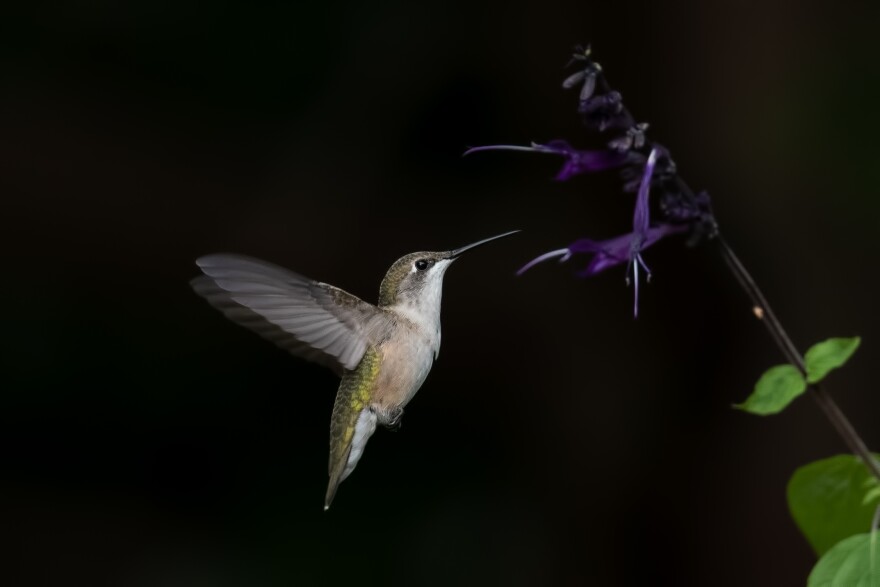September is a time of transitions, especially here on the Cape. Summer visitors have transitioned back over the bridge. Our kids transition back to school, our beaches and parks transition back to local ownership. And perhaps more than in any other month, transitions in the bird world are everywhere evident, from the exodus of northern songbirds to the arrival of the first winter sea ducks. But few transitions are sadder than the loss of our hummingbirds, those kinetic clowns of flowery suburban backyards.
Every mid-September, our hummers point their bills south and buzz off to Central America. Despite our enticements of nectar-filled feeders and flowers still in bloom, their instinct to move on is strong, and by months end they’ll nearly all be gone. From October to March they will take up residence in an orange or cashew grove in Belize, a dry Pacific forest in Mexico, or a suburban neighborhood in Costa Rica, where they’ll mingle with dozens of tropical hummingbird species, and visit exotic flowers totally unfamiliar to New Englanders. But some of those flowers are probably more familiar than you may realize.
If you really want the hummingbirds buzzing around your deck, there are some potted plants you can pick up at your local nursery that evolved with hummingbirds in the tropical and subtropical Americas, plants like black and blue Salvia and Cuphea, also known as Firecracker Plant. I always find it more satisfying to watch hummingbirds visit flowers than feeders, and these annuals provide a cheap thrill for the lazy gardener - easy to keep in pots, they’ll bring the hummers all day long. I would guess that the two young hummingbirds still resident in my neighborhood visit these flowers 30-40 times a day. Various Agastaches with peachy-colored flowers and names like “hummingbird mint” also work, but be warned that though nurseries sell them as perennials, they are annuals in our zone. Another tropical Salvia, known as pineapple sage, will bloom from fall through early winter in some years, and I always keep some on hand in case a rare vagrant, typically a Rufous Hummingbird from the west, decides to show up.
Of course, planting native flowers that our hummingbirds evolved with during the breeding season is preferable to these exotic annuals, which always feel like cheating to me. Native coral honeysuckle and trumpet creeper vines are easy to grow and both are primarily hummingbird pollinated, as evidenced by their deep tubular flowers, rich red in the case of the honeysuckle and bright orange for the trumpet vine. The Major Wheeler cultivar of the native honeysuckle vine is often available at local nurseries and can have two periods of profuse bloom from early to late summer. You can find examples planted in the gardens of the Cape Cod Museum of Natural History and Wellfleet Bay sanctuary.
Scarlet bee balm is another hummingbird pollinated garden flower – experiments showed that the flower structure evolved specifically to slow down feeding hummingbirds so they would collect and distribute more pollen with each visit. The Red Buckeye is a small hummingbird magnet of a tree native to the southeastern US, and worth a try if you can find one. My personal favorite native for hummingbirds is cardinal flower, though this species loves to hurt the ones that love them - I rarely have them come back the next year.
Fall is a great time to plan and plant next year’s garden, so look for these plants now if you can find them and get them in the ground. Mail order nurseries are another option if your local operations are sold out. I find that envisioning next year’s garden is a great way to emotionally survive the winter. Though I suppose following the hummingbirds to Costa Rica might also work.








